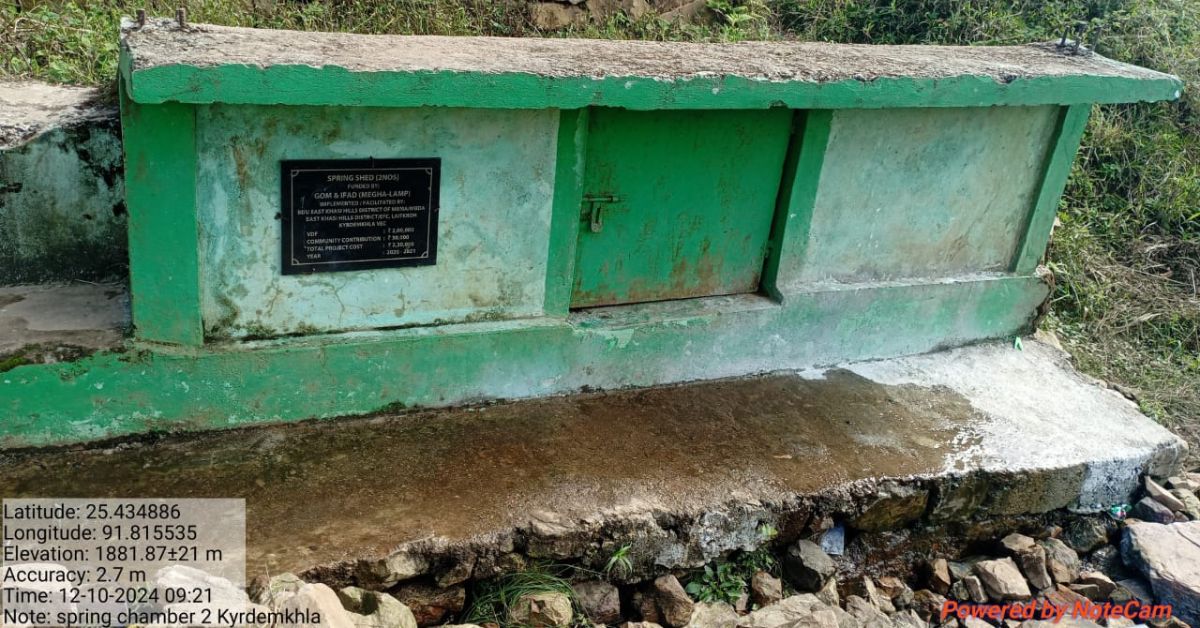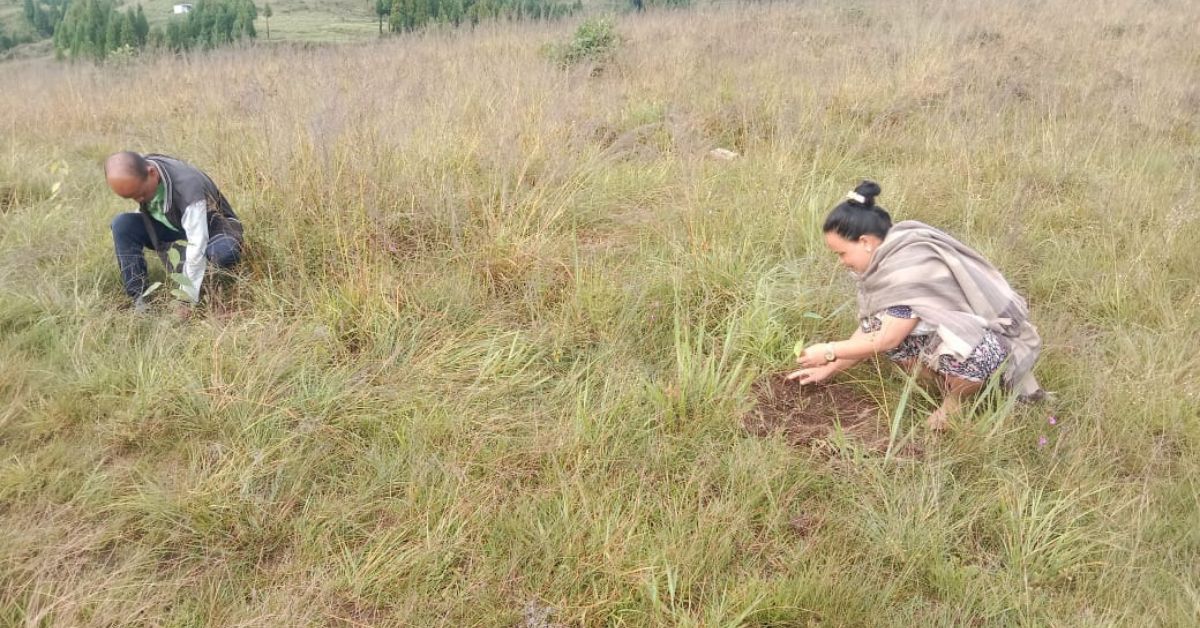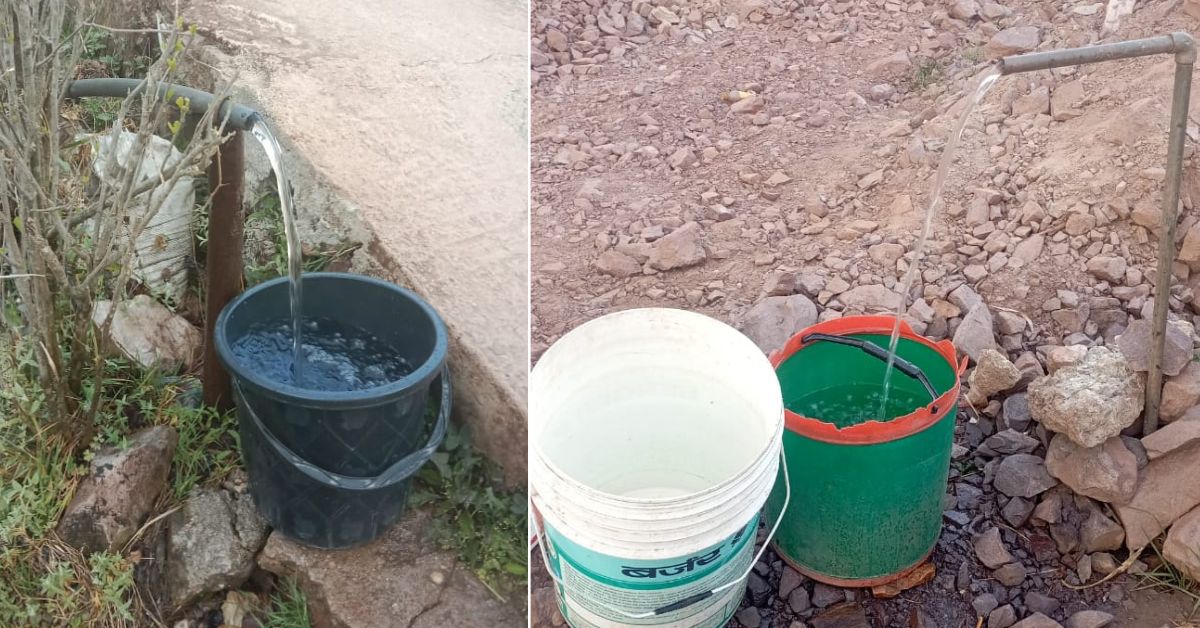In the lush and verdant landscapes of Meghalaya, the daily routine of rural women began with a trek. The paths are steep and arduous, winding through hilly landscapes where the women balance heavy aluminium pots on their heads and waist.
Filled with water from distant streams, women were required to trek up to one kilometre each way. This daunting task must be completed not once, but twice daily — to secure water for drinking, cooking, and cleaning. Sometimes, even while braving illness and menstruation. Despite feeling weak, dizzy, or experiencing pain, women must participate in this daily ritual, as water is too vital a resource to forego.
The time spent collecting water left women with little opportunity for education, leisure, or other productive activities.
Safety is another concern. Women travel in groups to avoid potential threats, both human and environmental, while navigating these remote paths. Each journey is undertaken out of sheer necessity, not choice.
Surprisingly, such was the situation of Kyrdemkhla village which is located close to Mawsynram – renowned as the wettest place on Earth, receiving an average annual rainfall of over 11,871 mm.
The Integrated Basin Development and Livelihoods Promotion Programme (IBDLP), a flagship livelihood program of the Meghalaya government mentions that “Meghalaya grapples with the irony of scarcity amidst plenty. The rainfall is only for 6-8 months in a year, leaving the dry months with lots of water scarcity problems. Due to the distinct topographical and geomorphological conditions of the state, there is high surface run off to the neighbouring plains very quickly.”

Fast forward to 2025, Lakmen Mary Nongkhlaw stood up to ease the physical burden on her community women and also improve the overall quality of life in her community.
A woman’s quest for water self-sufficiency
Lakmen Mary has been working as an assistant teacher at Diengkynthong LP School for the past 15 years. Her determination to tackle the water crisis began with her firsthand experience of its impact on daily life. She was amongst those village women trekking uphill balancing water buckets.
Sharing her experience with The Better India in Khasi language, she says: “The school started at nine. This meant I needed to do all household chores including cooking, cleaning, and fetching water before leaving for work. I’d leave to fetch water at seven in the morning and stand in the queues as the water needed to be collected from a specific area in a stream that was not polluted.”
Touched by the inefficiency and challenges faced by herself and her community, she has championed solutions to ease these burdens.
Over the past 15 years, she led initiatives to construct water assets such as check dams and water storage tanks. She also spearheaded afforestation movements to protect water catchment areas, significantly improving water availability closer to villagers’ homes.

Under her leadership, the villagers planted 16,000 saplings, constructed five water storage tanks, and renovated six spring chambers. “We built four check dams and implemented water conservation projects to ensure sustainable access to this critical resource. These efforts have resulted in six water taps installed within the village which facilitated easy water access even during the dry winter seasons. We now get water effortlessly,” adds Lakmen Mary, who also holds the post of Secretary of the Village Employment Council since 2016.
From trekking for water to taps on demand
Recognised as a “changemaker” in her community, Lakmen Mary’s exemplary work in water resource management has significantly transformed the water accessibility in her village.
The transformation brought about by these water conservation efforts is profound. “Women now spend less time on arduous water-fetching trips, allowing more quality time to be spent with families or on economic and social activities. These changes have revitalised community life and have even offered educational opportunities for women and girls, who now have time to attend school regularly,” she adds.

Notably, Lakmen Mary’s initiatives have encouraged the community, especially women, to engage more actively in conservation and developmental projects, igniting a sense of empowerment and agency among the villagers.
Batrity Warkri, who has been working as a teacher in the village since 2007, says, “Lakmen Mary has become a role model of how grassroots leadership can ignite change. I have seen her devote her time after work to conservation efforts. From planting saplings to digging soil and constructing check dams, she is a very hardworking woman. Because of her efforts, life of villagers have improved.”
These narratives are not just about overcoming immediate barriers; they are about reshaping futures. “By addressing something as fundamental as water access, communities can begin to tackle larger issues such as health, education, and economic development,” says Lakmen Mary.
She continues to add, “Working on this project did not cost me a penny, but I only devoted my time post-teaching. After my working hours, I’d go around the village armed with construction tools and repair spring chambers and construct check dams. It’s all our labour of love.”

Her efforts have not gone unnoticed. Lakmen Mary’s efforts have earned her numerous accolades, including from the Office of The District Rural Development Agency, East Khasi Hills District, Shillong, affirming her positive impact on her village.
Last September, Lakmen Mary found herself in the distinguished company of President Droupadi Murmu at India Water Week in New Delhi.
Overcome with pride and disbelief, she remarks, “I couldn’t believe that I was standing in front of the President. I got to narrate my work to her. Back home, my community members shared this joy and celebrated my recognition with pride: my photos were being circulated in WhatsApp groups, many of them proudly set their WhatsApp status to mark the occasion,” she recalls with pride.
Yet, her sense of fulfilment is coupled with a commitment to further progress. “The work is far from over. Now, I aim to initiate additional projects, including the construction of a large check dam and implementing three new rainwater harvesting systems, to continue improving water access and conservation in my community,” she adds.
Edited by Megha Chowdhury; All images courtesy: Lakmen Mary Nongkhlaw.
